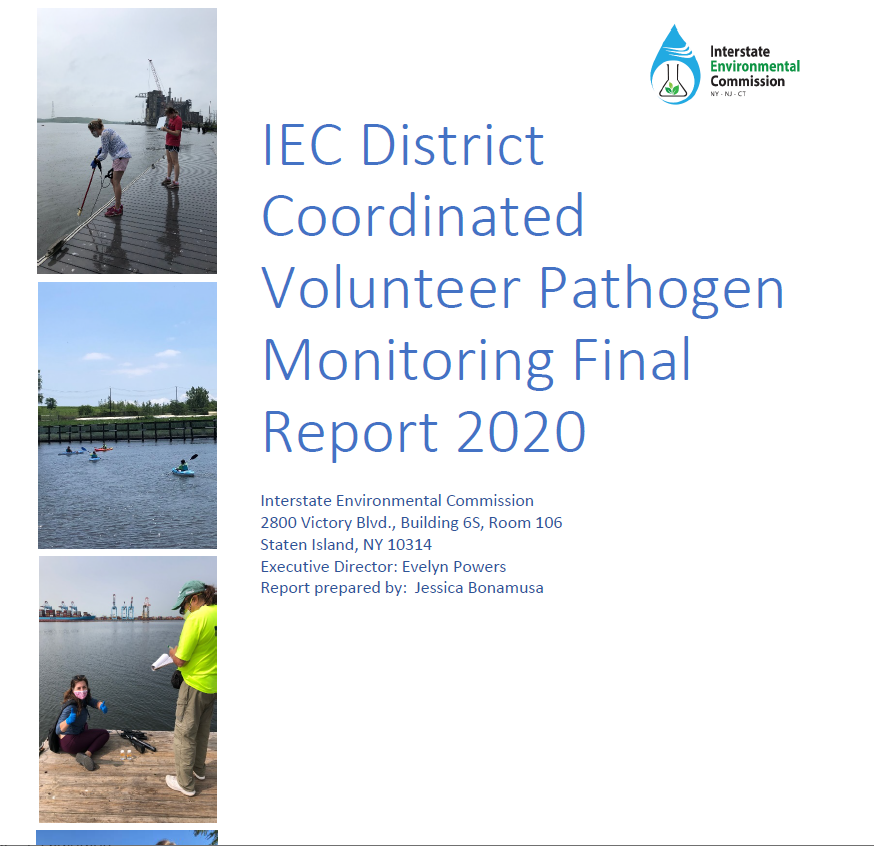IEC District Coordinated Volunteer Pathogen Monitoring Final Report 2020
With thanks to Jessica Bonamusa with the Interstate Environmental Commission (IEC), which provides equipment, laboratory equipment, and other technical support to the LRWP as part of an EPA Volunteer Pathogen Monitoring Program, the Lower Raritan Watershed Partnership is pleased to share this Final Report for 2020 pathogens monitoring of the Lower Main Stem of the Raritan River.
IEC’s Volunteer Pathogen Monitoring Program is intended to facilitate interested organizations in testing their local waterways for pathogens. This program targets areas that are not routinely monitored by regulatory agencies or other established monitoring programs. IEC provides assistance to volunteer groups in project design, sampling site selection, as well as hands-on field sampling training, supplies and equipment, and QA/QC oversight for the project. Laboratory analyses for pathogens is conducted in the IEC laboratory by IEC staff. Participating organizations and volunteers sample along publicly-accessible shoreline areas and in tidal creeks. Surveys include in situ measurements of water temperature, salinity, dissolved oxygen, and pH, though these parameters can vary depending on the needs of IEC’s partners. Pathogen samples are taken to the IEC laboratory where they are analyzed for Enteroccoccus and Fecal Coliform, indicators of sewage waste, using membrane filtration (EPA 1600) and/or the newer IDEXX® Enterolert methods. All sampling and analytical procedures are outlined in an EPA-approved Quality Assurance Project Plan.
In 2020, the LRWP’s Volunteer Monitoring Program spanned 15 weeks, starting in July. Due to the pandemic, this year the Program faced unprecedented challenges. The IEC laboratory was closed for the first three weeks of sampling, so samples collected during this time period were analyzed by a contract laboratory using methods which, while EPA-certified, differed from the methodology utilized by IEC. All sampling events were scheduled in advance and occurred regardless of recent precipitation, unless conditions were dangerous. This season included four groups: Hackensack Riverkeeper, the Lower Raritan Watershed Partnership, Gowanus Conservancy and Freshkills Park for a total of 14 sites. Six of these sites are within the Lower Raritan Watershed.

